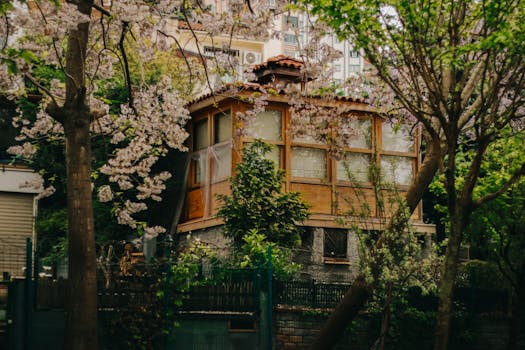
Urban Green Spaces: The Future of Outdoor Living in European Cities by 2025
Urban Green Spaces are becoming increasingly important in European cities, and for good reason. Urban Green Spaces provide numerous benefits, including improved air quality, increased biodiversity, and enhanced mental health. As we look to the future, it’s clear that urban green spaces will play a vital role in shaping the way we live, work, and interact with our surroundings.
The Benefits of Urban Green Spaces
So, what exactly are the benefits of urban green spaces? Some of the most significant advantages include:
- Improved air quality: Urban green spaces help to absorb pollutants and particulate matter, improving the overall air quality in cities.
- Increased biodiversity: By providing habitats for plants and animals, urban green spaces help to promote biodiversity and support local ecosystems.
- Enhanced mental health: Spending time in nature has been shown to have a positive impact on mental health, reducing stress and anxiety.
- Increased social connections: Urban green spaces provide opportunities for social interaction, helping to build stronger, more connected communities.
The Future of Urban Green Spaces in European Cities
As we move forward, it’s likely that urban green spaces will become even more integrated into the fabric of European cities. Some of the trends that are likely to shape the future of urban green spaces include:
- Increased use of green roofs and walls: Green roofs and walls are becoming increasingly popular, providing additional space for plants and helping to insulate buildings.
- More emphasis on community engagement: Urban green spaces will be designed with community engagement in mind, providing opportunities for local residents to get involved in the planning and maintenance of these spaces.
- Greater focus on sustainability: Urban green spaces will be designed with sustainability in mind, incorporating features such as rain gardens and green infrastructure to help manage stormwater runoff.
Case Studies: Successful Urban Green Spaces in European Cities
There are many examples of successful urban green spaces in European cities. Some notable case studies include:
- The High Line in London: This elevated park has become a popular destination for both locals and tourists, providing a unique green space in the heart of the city.
- The Park at the Palace of Versailles: This stunning park is a masterpiece of French landscape design, providing a peaceful escape from the hustle and bustle of city life.
- The Green Roof at the Chicago City Hall: This innovative green roof provides a habitat for local wildlife and helps to insulate the building, reducing energy costs.
Conclusion
In conclusion, urban green spaces are a vital component of European cities, providing numerous benefits for both residents and the environment. As we look to the future, it’s clear that these spaces will play an increasingly important role in shaping the way we live, work, and interact with our surroundings. By incorporating more green spaces into our cities, we can create healthier, more sustainable, and more connected communities.






